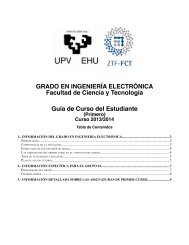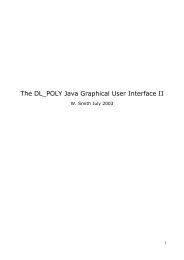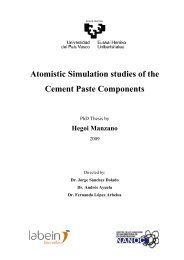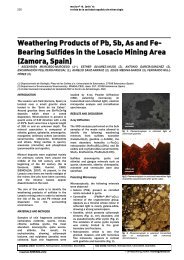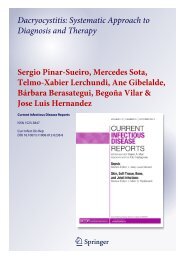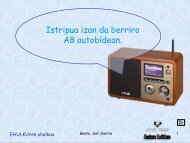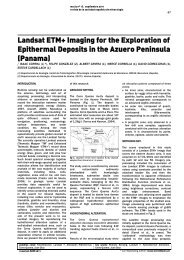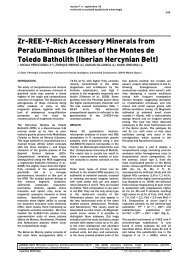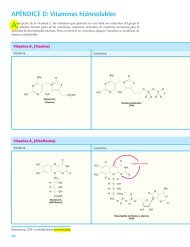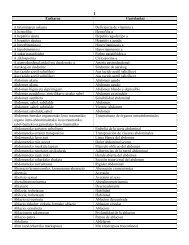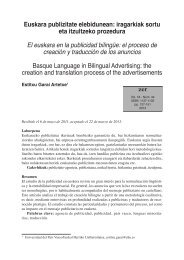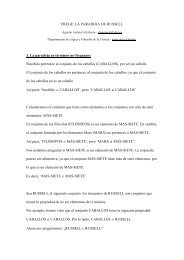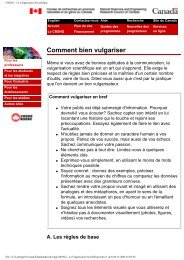Fiabilidad de los predictores clínicos y de la biopsia de arteria ...
Fiabilidad de los predictores clínicos y de la biopsia de arteria ...
Fiabilidad de los predictores clínicos y de la biopsia de arteria ...
You also want an ePaper? Increase the reach of your titles
YUMPU automatically turns print PDFs into web optimized ePapers that Google loves.
<strong>Fiabilidad</strong> <strong>de</strong> <strong>los</strong> <strong>predictores</strong> <strong>clínicos</strong> y <strong>de</strong> <strong>la</strong> <strong>biopsia</strong> <strong>de</strong> <strong>arteria</strong> temporal en el diagnóstico <strong>de</strong> <strong>la</strong> arteritis <strong>de</strong> célu<strong>la</strong>s gigantes<br />
Joan Brunsó Casel<strong>la</strong>s<br />
FIGURAS<br />
FIGURA 1: Representación <strong>de</strong>l ojo humano <strong>de</strong>l libro Tadhkirat <strong>de</strong> Ali Ibn Isa.<br />
Página:19<br />
FIGURA 2: La oclusión <strong>de</strong> <strong>la</strong> luz <strong>de</strong> <strong>la</strong>s ramas terminales <strong>de</strong> <strong>la</strong> <strong>arteria</strong> carótida son<br />
<strong>la</strong>s responsables <strong>de</strong> <strong>la</strong> clínica isquémica craneal típica <strong>de</strong> <strong>la</strong> ACG.<br />
Página: 22.<br />
FIGURA 3: Necrosis lingual. Imagen extraida <strong>de</strong>l artículo <strong>de</strong> Kusanale A. et al.<br />
Página 23.<br />
FIGURA 4: Ulceración <strong>de</strong>l cuero cabelludo en una paciente con arteritis <strong>de</strong> célu<strong>la</strong>s<br />
gigantes. Imagen extraida <strong>de</strong> Adams WB et al. Página 24.<br />
FIGURA 5: Los linfocitos T activados y <strong>los</strong> macrófagos producen una reacción<br />
granulomatosa en <strong>la</strong> pared <strong>arteria</strong>l. A nivel <strong>de</strong> <strong>la</strong> adventicia, se produce<br />
<strong>la</strong> activación <strong>de</strong> célu<strong>la</strong>s T, y <strong>los</strong> vasa vasorum proporcionan una puerta<br />
<strong>de</strong> entrada para <strong>la</strong>s célu<strong>la</strong>s inf<strong>la</strong>matórias (IFN- ɣ : una citoquina que<br />
regu<strong>la</strong> <strong>la</strong>s funciones <strong>de</strong> <strong>los</strong> macrófagos reclutados en el infiltrado<br />
inf<strong>la</strong>matorio). Estos macrófagos reclutados, se diferéncian en distintos<br />
subgrupos <strong>de</strong> célu<strong>la</strong>s efectoras perjudiciales para <strong>los</strong> tejidos;<br />
producen metalloproteinasas <strong>de</strong> <strong>la</strong> matriz e intermediarios reactivos<br />
<strong>de</strong>l oxígeno. Los macrófagos y célu<strong>la</strong>s gigantes multinucleares<br />
también proporcionan factores <strong>de</strong> crecimiento y factores angiogénicos<br />
que intensifican <strong>la</strong> respuesta inf<strong>la</strong>matoria a nivel <strong>arteria</strong>l. La reacción<br />
<strong>de</strong> <strong>la</strong> <strong>arteria</strong> es <strong>de</strong>sadaptativa, y conduce a <strong>la</strong> oclusión <strong>de</strong> <strong>la</strong> luz<br />
vascu<strong>la</strong>r por hiperp<strong>la</strong>sia intimal. DC: célu<strong>la</strong>s <strong>de</strong>ndríticas; GC: célu<strong>la</strong>s<br />
gigantes multinucleadas; IL: interleuquinas; M: macrofagos; MMP:<br />
metalloproteinasas <strong>de</strong> <strong>la</strong> matriz; PDGF: factor <strong>de</strong> crecimiento <strong>de</strong>rivado<br />
<strong>de</strong> p<strong>la</strong>quetas; ROI: Intermediarios reactivos <strong>de</strong>l oxígeno; VEFG: factor<br />
<strong>de</strong> crecimiento endotelial. Página 29.<br />
FIGURA 6: Imagen micoscópica <strong>de</strong> una <strong>biopsia</strong> <strong>de</strong> <strong>arteria</strong> temporal con<br />
diagnóstico<strong>de</strong> arteritis <strong>de</strong> célu<strong>la</strong>s gigantes. Se observa <strong>la</strong> pared <strong>arteria</strong>l<br />
con infiltrado inf<strong>la</strong>matorio linfocitario localizado preferentemente en<br />
<strong>la</strong> adventicia y en <strong>la</strong> lámina elástica externa. Página 42.<br />
FIGURA 7:Imagen microscópica <strong>de</strong> una <strong>biopsia</strong> <strong>de</strong> <strong>arteria</strong> temporal con diagnóstico<br />
<strong>de</strong> arteritis <strong>de</strong> célu<strong>la</strong>s gigantes. Se observa <strong>de</strong>sestructuración y<br />
fragmentación <strong>de</strong> <strong>la</strong> lámina elástica externa. Página 43.<br />
176



